Marooned in the middle of the Indian Ocean, this archipelago of 115 islands is notoriously exclusive (and expensive), and if you simply couldn’t imagine holidaying without a reiki spa and a private helipad, then you’ll certainly find plenty of places to indulge your taste for luxury travel.
But a visit to the Seychelles doesn’t necessarily have to be a budget-buster. With a little pre-planning and some island know-how, you’ll find it’s perfectly possible to experience these beautiful islands without having to remortgage your house.
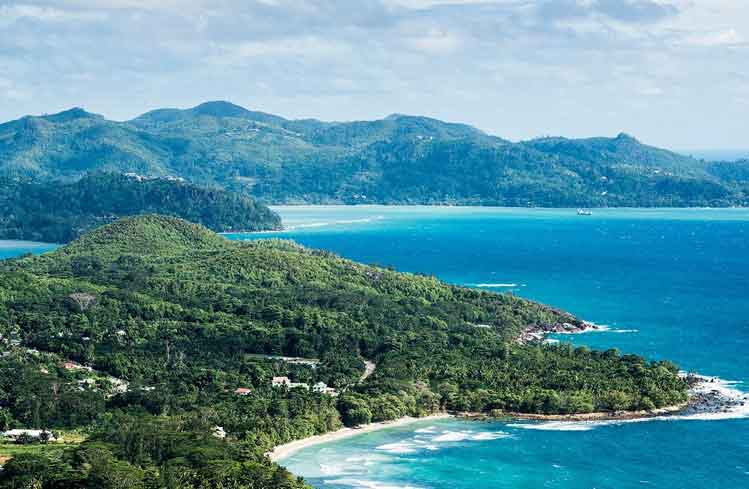
The lush eastern coastline of Mahé, the largest island of the Seychelles. Image by Oliver Berry / Lonely Planet.
There’s no avoiding it: flights to the Seychelles are pricey, especially since direct routes from European hubs such as Paris and London have been stopped, and all flights now have to route through Doha or Abu Dhabi.
Emirates (www.emirates.com) and Etihad (www.etihad.com) are the main carriers. Smaller carriers such as Ethiopian Airways (www.ethiopianairways.org.uk) sometimes have cheaper deals: online comparison sites like Skyscanner (www.skyscanner.net) are a good place to start your search. Airfares are usually lower during the rainy season from October to April.
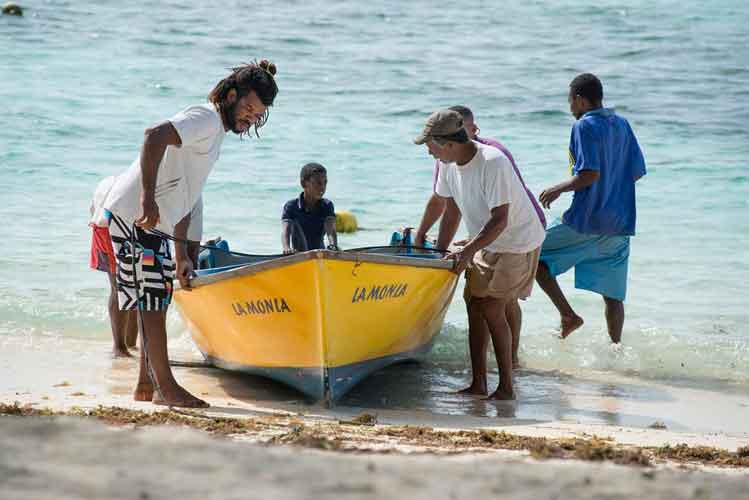
Locals haul in a boat on the quiet island of La Digue. Image by Oliver Berry / Lonely Planet.
The busiest periods are between December and January, and especially during the Seychelles ‘summer’ from May to September, when the weather is usually dry and settled, and prices take a hefty hike upwards. The ‘winter’ from October to April is when the islands receive most of their annual rainfall, but since the climate rarely drops much below 24 degrees year-round, you’ll still have a reasonably good chance of at least some beach-lounging weather.
Unsurprisingly, you’ll have a better chance of snagging a deal during the low season. Even the luxury resorts sometimes offer package deals to attract off-season guests.
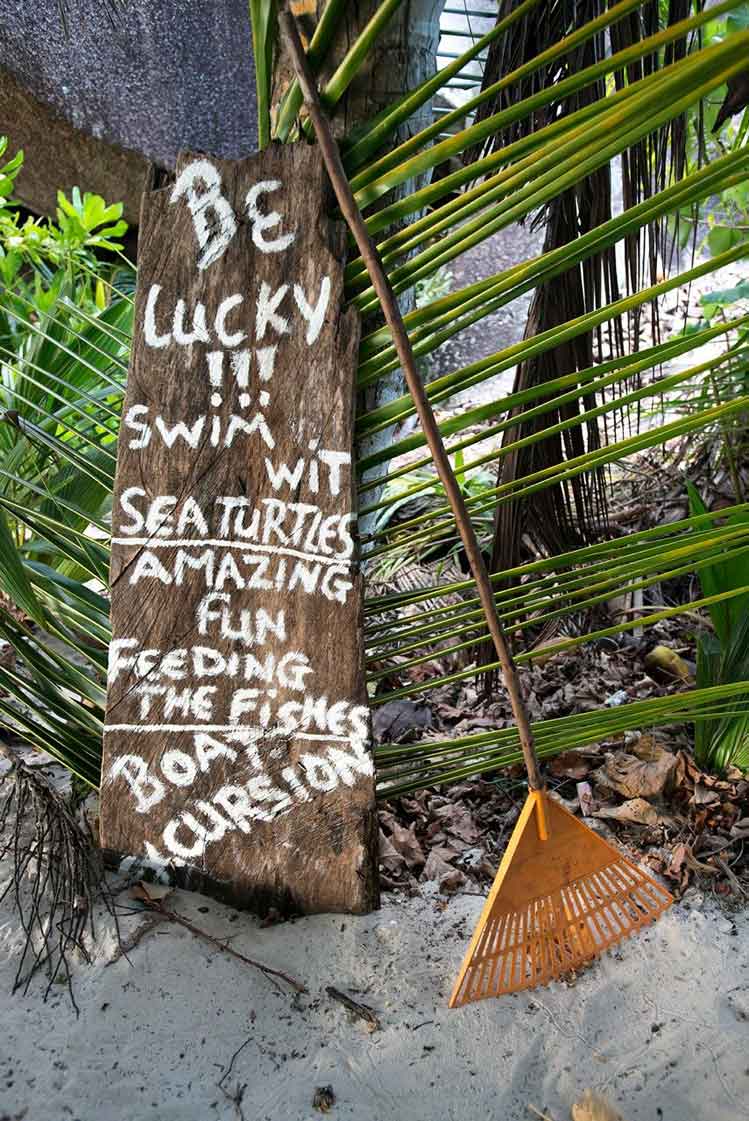
Beach sign under palm trees on the island of La Digue. Image by Oliver Berry / Lonely Planet.
There are three main islands which are easy and affordable to get to. Mahé is the largest island, home to the international airport and the Seychelles’ capital, Victoria. The main attractions here are trail-walking, snorkelling and swimming.
The second-largest island, Praslin, lies approximately 50km northeast. It has a much quieter vibe compared to Mahé, as well as plenty of glorious stretches of sand such as the sheltered cove of Anse Lazio. The island is also home to the Vallée de Mai nature reserve, a Unesco World Heritage Site and one of the few places on the islands where you can see wild coco de mer – the world’s largest coconut, infamous for its resemblance to a pert posterior.
Tiny La Digue is 12km east and is perhaps the classic Seychelles escape, a sleepy island where everyone travels by bike and there are no street lights to obscure the stars. It’s also where you’ll find the most spectacular beaches, such as the lagoon of Anse Source d’Argent and the secluded coves of Grand and Petite Anse.
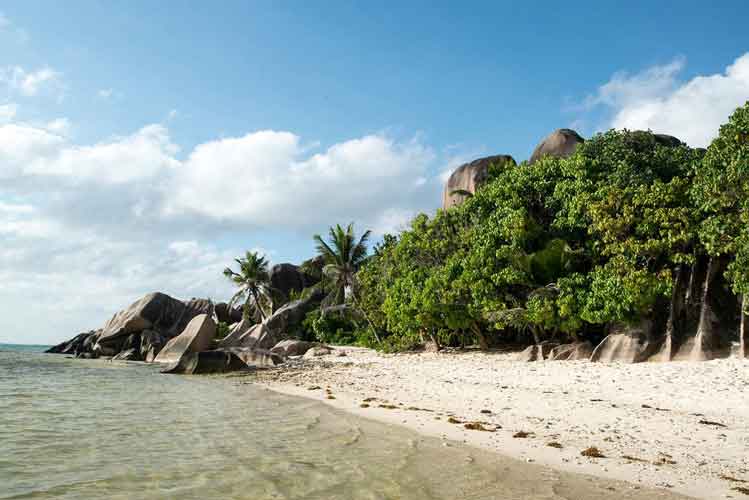
Granite boulders behind the lagoon at Anse Source d'Argent, the most famous beach on La Digue. Image by Oliver Berry / Lonely Planet.
Reaching the more remote islands is where things start to get expensive. Several islands are accessible as day-trips, including the giant tortoise reserves on Cousin Island and the many small islands of the Ste-Anne Marine Park. Organised excursions with the local snorkelling operators abound, and by asking around you should be able to hire a boat privately and halve the cost.
The more remote Outer Islands can only be reached by air, and the price-tags here really start to get eye-watering. Many islands are privately owned and occupied by fantastically exclusive resorts – prices on Bird Island start at a minimum of €600 per night, while on Fregate you’ll be lucky to see any change out of €2000.
Luxury resorts abound, but a growing number of B&Bs and homestays mean that the islands are becoming more affordable for independent travellers. Staying with locals is also the best way to get a feel for the islands.
The Seychelles Tourist Board (www.seychelles.travel/en) has budget accommodation starting from €50 a night, as well as plenty of self-catering villas, which can be a great way of cutting costs if you’re travelling in a group or as a family. Discounted rates are often offered the longer you stay, so staying in one place rather than hopping between hotels can be another good way of keeping costs down. All accommodation is registered by the Ministry of Tourism, who guarantee minimum standards of service and facilities.
Resort restaurants tend to be expensive, but you’ll find plenty of cheap beachside cafes and stalls dotted around where you can tuck into local delicacies such as octopus curry and creole chicken on the cheap. On Mahé, the markets in Victoria and Beau Vallon are also good for cut-price eats, and you can stock up on fresh fish, fruit and island veg if you’re happy to cook for yourself.
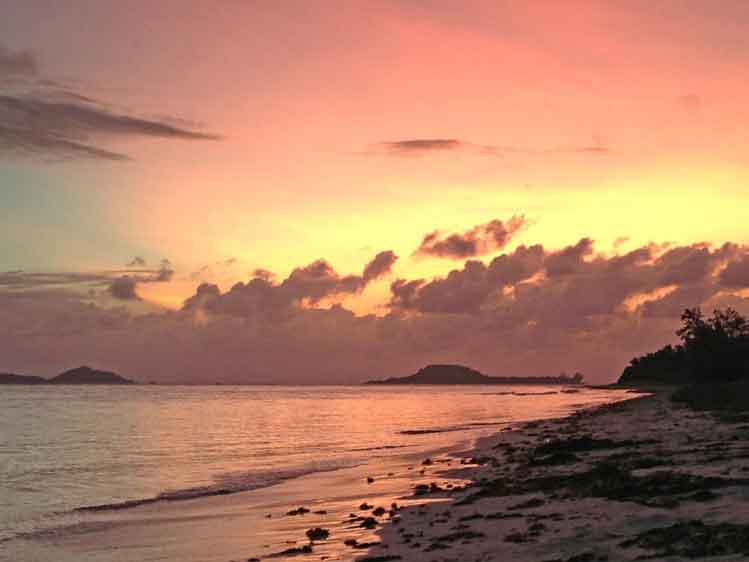
Sunset on the east coast of Praslin, the Seychelles' second largest island. Image by Oliver Berry / Lonely Planet.
Car hire and taxis are expensive, so catching the regular round-island buses on Praslin and Mahé is the cheapest way of getting around. If you’re sticking to the coast, bicycles are another option – and on La Digue, they’re pretty much the only option apart from the island’s taxi service (otherwise known as an ox-cart). Mahé and Praslin are surprisingly hilly, so if you’re venturing inland a scooter may be a better bet – they’re widely available.
The cheapest way to get between the islands is aboard the Cat Cocos ferry service (www.catcocos.com). The ferry from Mahé to Praslin takes an hour, while La Digue is a short half-hour hop from Praslin.
The Seychelles is one of the safest places to visit in the Indian Ocean. Locals rely heavily on the tourist economy, so you’ll likely find most people are friendly, welcoming and polite. English and French are both widely spoken, but the lingua franca is seselwa, a mixed-up Creole language incorporating elements of French, Indian, English and various other dialects.
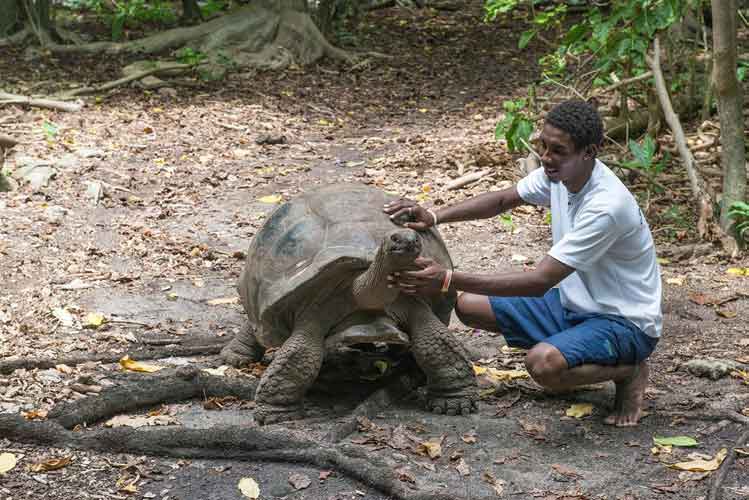
Nature guide Ryan Morel with one of the resident giant tortoises of Cousin Island, a protected nature reserve. Image by Oliver Berry / Lonely Planet.
As always, it depends on what you want to do – but you should be able to squeeze by on a budget of €80–100 a day once you factor in accommodation and meals.
Organised snorkelling trips come at a price, but beaches are publicly owned so you can snorkel for nothing if you bring your own gear.
Similarly, plenty of trails on Mahé are well-maintained and free to access – but hiring a local guide is an excellent way to learn more about the Seychelles’ unique flora and fauna.